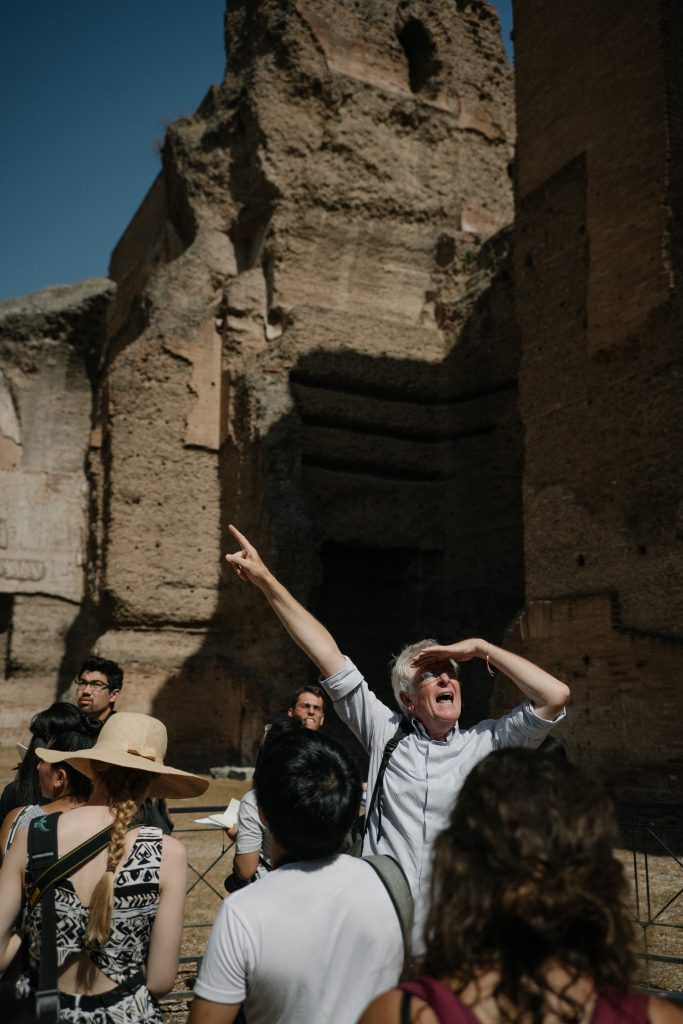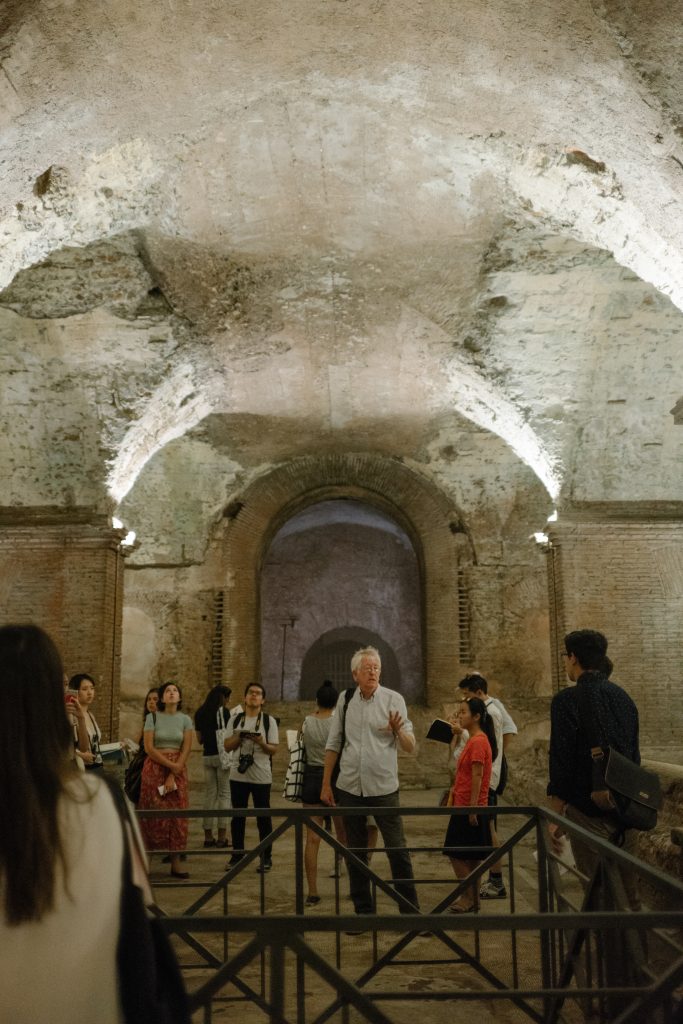 This semester, our studio project is related to thermal bath. Or at least an imitation of one as there is no major thermal source here in Rome, where our site is located. However, historically the city of Rome has been home to multiple baths alimented by a network of aqueducts. These were used to promote power of certain individuals and were frequented by Roman citizens in some cases on a daily bases. They were not only a place for relaxation but also a major place for social interaction. These by definition nude baths, have been in most cases either destroyed or most commonly used as spolia, that is, the ruins were used as construction material for new buildings, and its artwork was re-purposed in new settings, sometimes gaining a spot in a new collection, courtyard of a palazzo and so on.
This semester, our studio project is related to thermal bath. Or at least an imitation of one as there is no major thermal source here in Rome, where our site is located. However, historically the city of Rome has been home to multiple baths alimented by a network of aqueducts. These were used to promote power of certain individuals and were frequented by Roman citizens in some cases on a daily bases. They were not only a place for relaxation but also a major place for social interaction. These by definition nude baths, have been in most cases either destroyed or most commonly used as spolia, that is, the ruins were used as construction material for new buildings, and its artwork was re-purposed in new settings, sometimes gaining a spot in a new collection, courtyard of a palazzo and so on. Our site this semester is located on the South-Western side of the Caracalla baths, a site triangular in shape, currently partially inhabited by a garden run by nuns. The complexities of this site include a slight elevation, busy intersection and roads, building codes and so on, but most importantly the historical context in which it is situated. One cannot just ignore the presence of both the ruins of the Caracalla baths and the Aurelian walls near by. Thus it seemed almost necessary to visit at least the baths of Caracalla, to gain some knowledge about its history through the wise words of Dr. Gadeyne. We not only visited the more popular ruins, but thanks to our professor Dr. Gadeyne have also gained access to many underground spaces usually not accessible to public. This permitted us to understand the complex and monumental structure and functioning of these baths, and together with the visit of the Zumthor Thermae in Vals, gave us a true insight and inspiration for our own projects.
Our site this semester is located on the South-Western side of the Caracalla baths, a site triangular in shape, currently partially inhabited by a garden run by nuns. The complexities of this site include a slight elevation, busy intersection and roads, building codes and so on, but most importantly the historical context in which it is situated. One cannot just ignore the presence of both the ruins of the Caracalla baths and the Aurelian walls near by. Thus it seemed almost necessary to visit at least the baths of Caracalla, to gain some knowledge about its history through the wise words of Dr. Gadeyne. We not only visited the more popular ruins, but thanks to our professor Dr. Gadeyne have also gained access to many underground spaces usually not accessible to public. This permitted us to understand the complex and monumental structure and functioning of these baths, and together with the visit of the Zumthor Thermae in Vals, gave us a true insight and inspiration for our own projects.
(all photos credit to Ihwa Choi)
